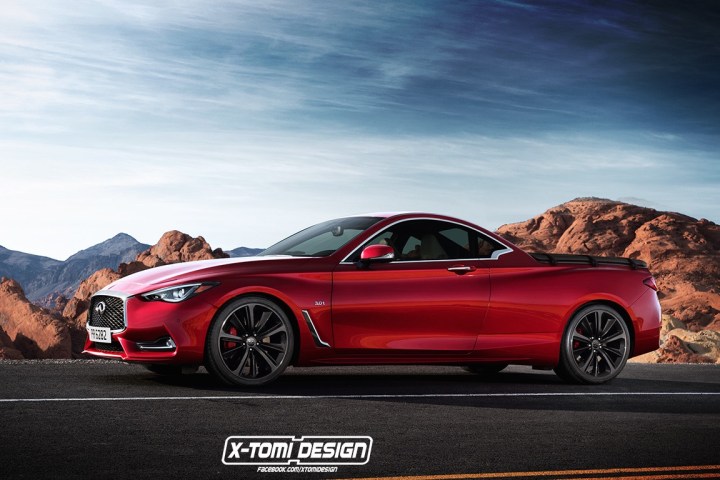
So it’s not surprising that X-Tomi Design had the idea to see what the recently released Infiniti Q60 coupe would look like as an El Camino-like pickup, but this rendering (via Carscoops) shows that it’s probably a good thing Infiniti isn’t planning on doing one of these for real.
The Q60 is far from the worst-looking luxury coupe out there, but its good looks are canceled out by the addition of the pickup bed. The resulting vehicle looks awkwardly stretched out, and the bubble-shaped cab doesn’t help matters. Sometimes giving a car the ute treatment is a cool idea, but this is not one of those times.
Read more: 2017 Infiniti Q60 first drive
The real Q60 went on sale recently as a 2017 model. It replaces the old Q60 coupe (which was called the G37 before Infiniti introduced its current naming scheme), and shares components with the Q50 sedan. Powertrains include a 2.0-liter turbocharged four-cylinder engine with 208 horsepower and 258 pound-feet of torque, a 3.0-liter twin-turbo V6 with 300 hp and 295 lb-ft, and a Red Sport version of the same engine, with 400 hp and 350 lb-ft.
While a Q60 convertible might arrive at some point, there’s little chance of Infiniti turning the two-door into an El Camino lookalike. With Ford and General Motors ending production of cars in Australia, the future of the entire “ute” category looks a bit dodgy. The last time a carmaker tried to sell one of these vehicles in the U.S. was in 2008, when GM announced that it would sell its Australian-market Holden Ute as the Pontiac G8 ST. GM’s subsequent bankruptcy and Pontiac’s demise put an end to that.
Even conventional pickup trucks with luxury branding haven’t had much success, although there may soon be more on the way. Mercedes-Benz is planning a pickup truck that will likely be based on the NP300 Navara built by Infiniti parent Nissan. Lexus has also hinted at the possibility of a pickup. That doesn’t mean Infiniti will follow its lead, though.
Editors' Recommendations
- 2022 Infiniti QX60 aims to make school runs more stylish
- Infiniti’s Formula One-inspired Project Black S may enter production


